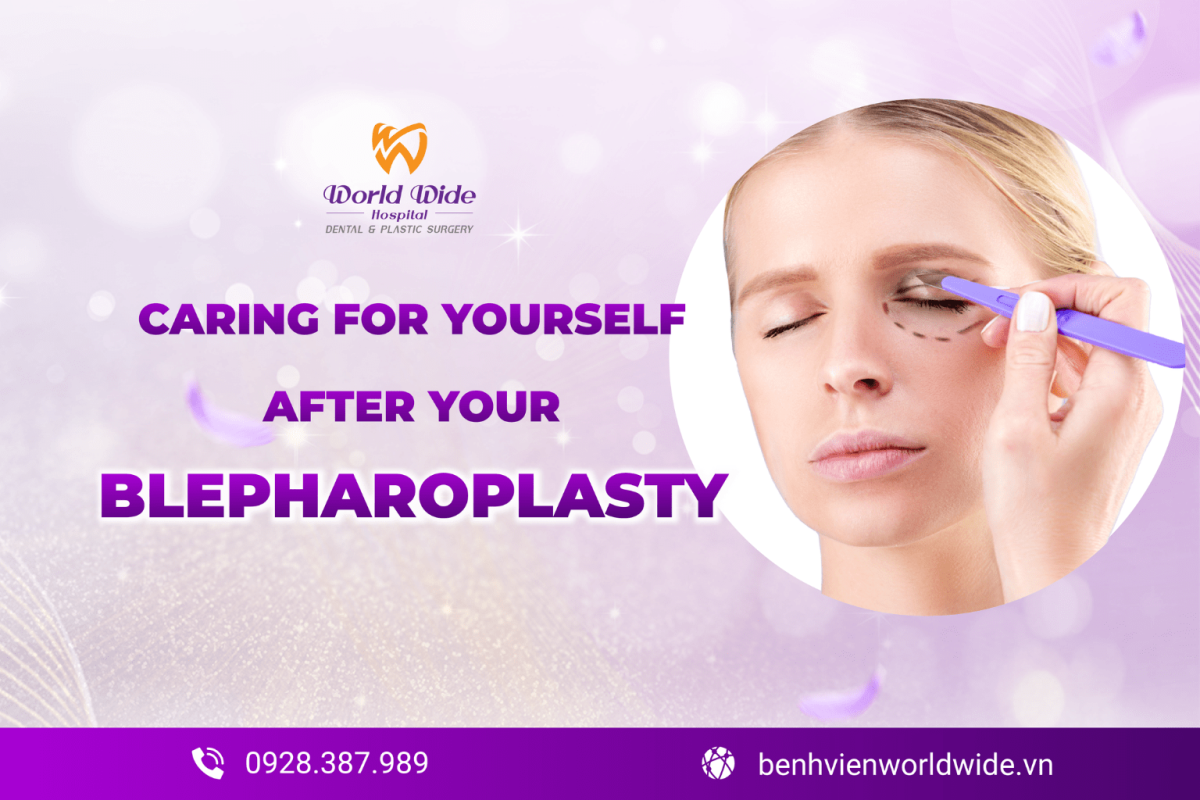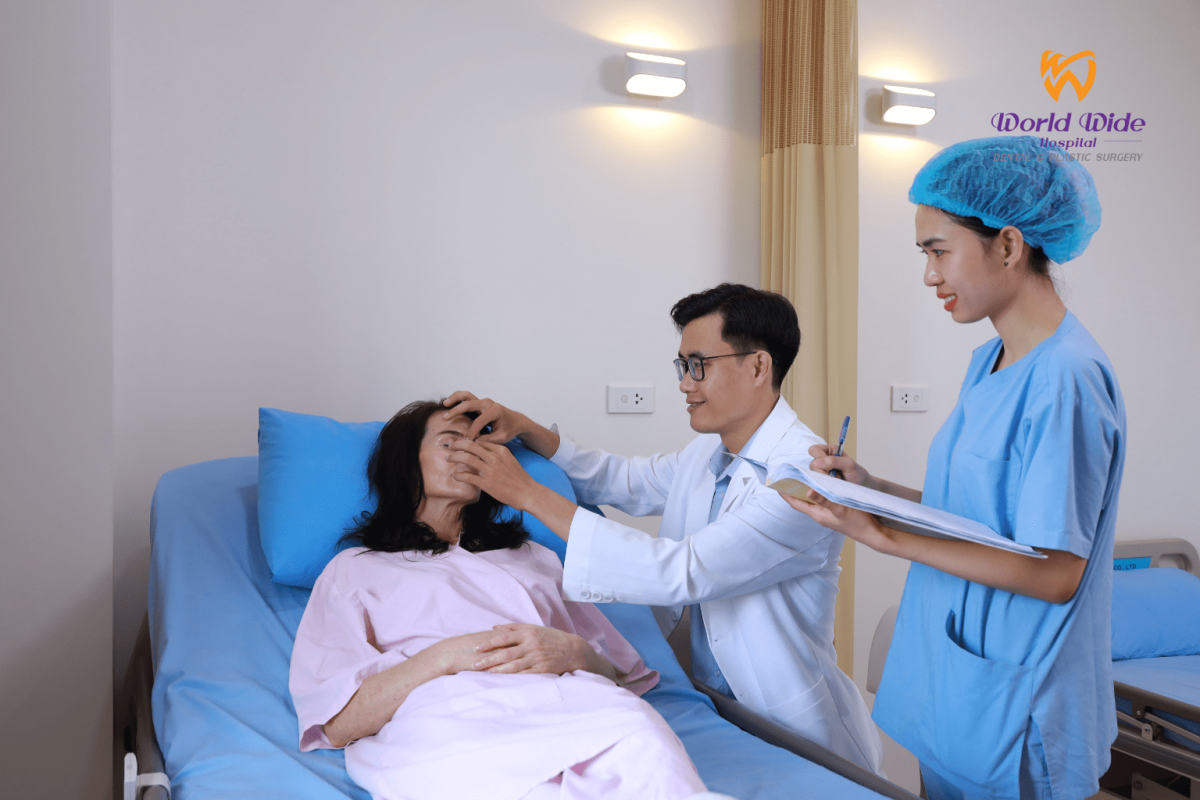
Follow these guidelines to care for yourself after your surgery.
- Wear dark sunglasses during your trip home. You may be sensitive to light.
- Don’t wear contact lenses until at least 2 weeks after your surgery. You can wear eyeglasses.
- It’s important to get quiet, peaceful rest during the first 3 to 4 days after your surgery. Let your healthcare provider know if you’re having nausea (feeling like you’re going to throw up) or cold symptoms. It’s important for you to avoid sneezing, coughing, and vomiting (throwing up), as much as you can. These can raise your blood pressure and cause bleeding at your surgical sites.
- Your eyes may look swollen and bruised after your surgery. The eyelid swelling is usually worse early in the morning and will get better during the day as you sit or walk around.
- Avoid alcohol and quit smoking until at least a month after surgery.
- Avoid eating foods that may cause allergy (varies per person).
Follow-up appointments
- You will need to see Dr. Anh for check up one day after your surgery. Your sutures (stitches) will be removed between 5 to 7 days after your surgery. Your nurse will make these appointments for you. Dr. Anh will inform you if more appointments are necessary.
- Besides these mandatory appointments, you are welcome to stop by the hospital anytime if you want our nurse to care for the incisions for you.

Care for the incisions
After your surgery, your nurse will show you how to use the cold packs, antibiotic ointment, sterile compresses and normal saline eye drops.
- Wash your hands thoroughly before you clean the incisions.
- Clean the skin incisions with normal saline (Natri Clorid 0.9%) and sterile compresses three times per day starting the day after surgery. It’s important to clean any dried blood and dead skin cells from the incisions. This helps prevent the incision area from being red & swollen, which is important for healing.
- Apply the cold packs to your eyelids every 10 to 15 minutes (on for 10 to 15 minutes, then off for 10 to 15 minutes) for the first 24 hours after your surgery. Try to do this as much as possible while you’re awake. After used, you can wash cold packs with soap and water and keep it in the refrigerator, freezer, or on ice..
Some patients will experience dry eyes. You can purchase non-prescription eye drops at your local pharmacy. Placing a drop in each eye every several hours will hydrate and refresh your eyes. Don’t pull on your eyelids while using the eye drops.
After all stitches have been removed, use scar cream as directed by your doctor/nurse. We recommend using Stratamed cream twice a day. Make sure you clean the incisions before putting on the cream.
Showering and applying make-up
You can take showers any time after your surgery, but do not get soap on the eyelids. You may gently wash below your eyes with wipes or a soft washcloth. You can use dry shampoo for your hair. We do provide hair washing service at our hospital. After stitches removal you can take full shower. We recommend shampooing your hair with mild products, such as baby shampoo.
Incisions can be covered with makeup 2 days (or when the incision site is fully healed) AFTER SUTURE REMOVAL. Be gentle when applying make-up and removing make up around the incisions, at least for 2 weeks after stitches removal. Incisions should not be exposed to direct sunlight for 6 months after surgery. Sunscreen is mandatory over all incisions.
Exercise
You can resume exercising after the stitches are removed. Only do light exercise such as walking, yoga for within the first week after stitches removal. After the first week, you can resume your normal exercises. Be careful when using a towel, be gentle around the scar area. Do not wear swim goggles as this will put a lot of pressure on the scar, which can slow down the healing process.

Discoloration
In some cases, discoloration of the skin follows swelling. The development of black, blue, green, or yellow discoloration is due to blood spreading beneath the tissues. In most patients, this is a normal occurrence, which may occur 2-3 days post-operatively. Some patients will have the “white of the eye” turn red or pink and this is not a problem. Some patients may also experience what looks like a blistering of the eyeball. This is from swelling and is rarely a problem.
After all stitches have been removed, the scars will appear a deep pink color. There will be varying amounts of swelling in and around the scars themselves. With the passage of time, the pink will become white, the firmness of the scar will soften, and they will become less noticeable.
Antibiotics
Please take the antibiotics as directed. Make sure you finish the antibiotic even if you feel like you are completely better and do not need it. Discontinue antibiotic use in the event of a rash or other unfavorable reaction, and notify the hospital of the reaction.
If you have the following symptoms, please call for assistant at +84 (922253888): a fever of 100.4° F (38° C) or higher, shaking chills, nausea, vomiting, increased pain, swelling, and redness at your surgical sites, continuous drainage from your suture lines, separation of your suture lines, sudden shortness of breath or trouble breathing, any unexplained or unexpected symptoms.

 Tiếng Việt
Tiếng Việt